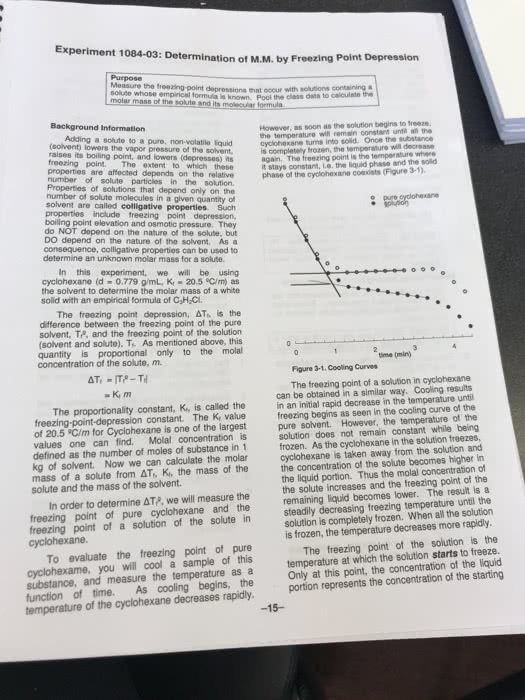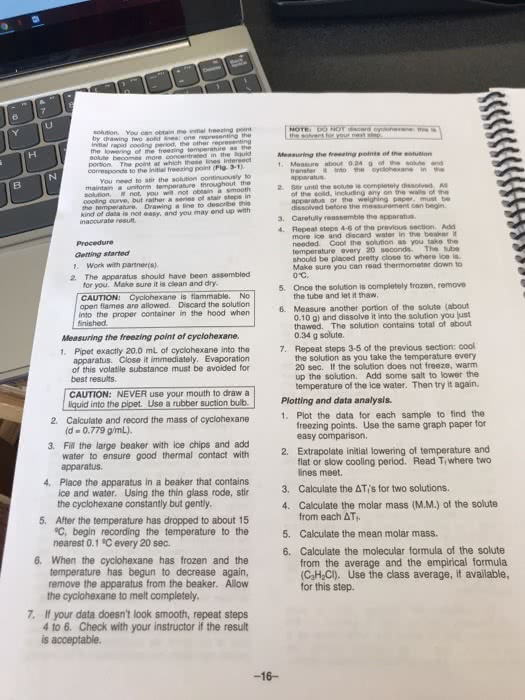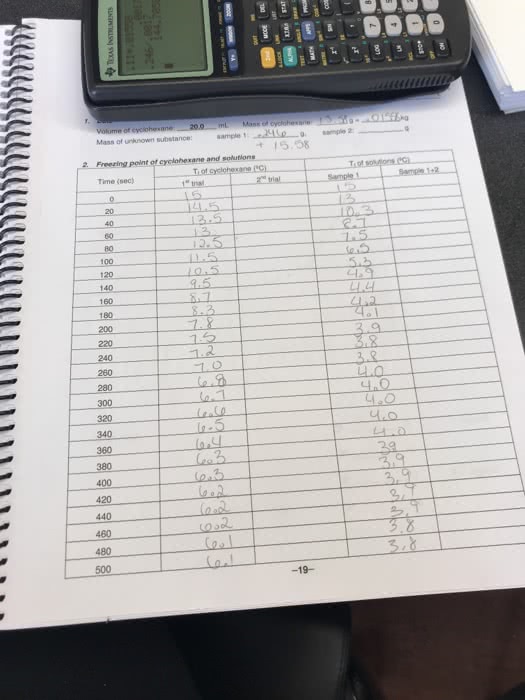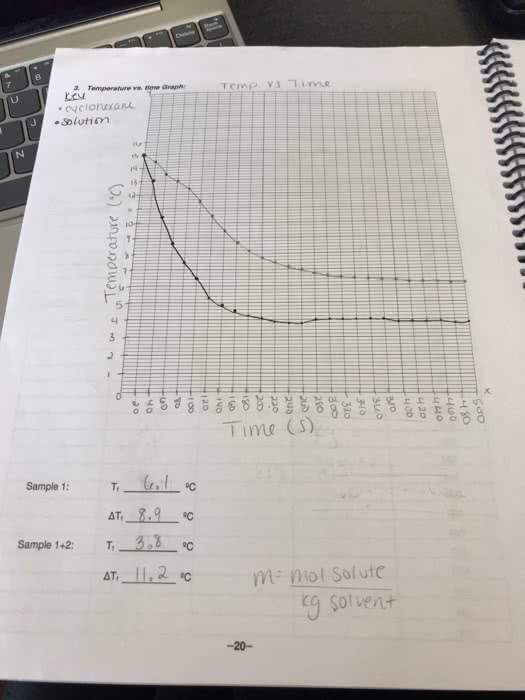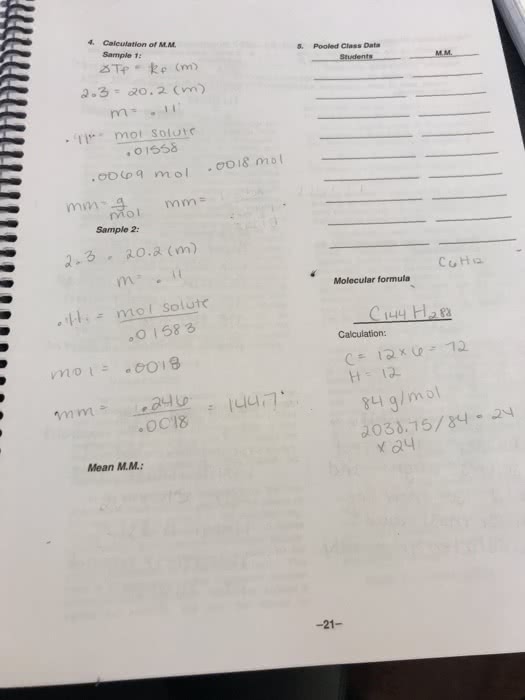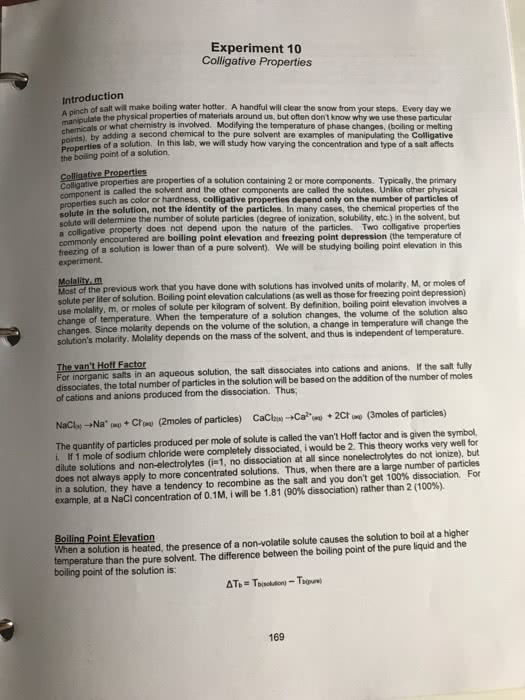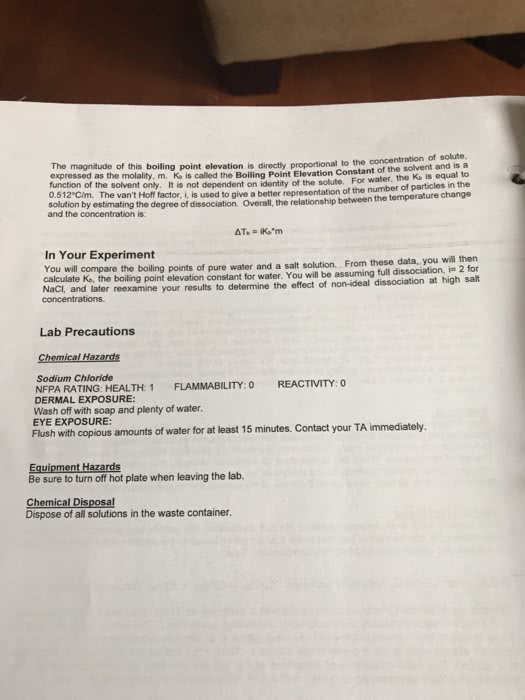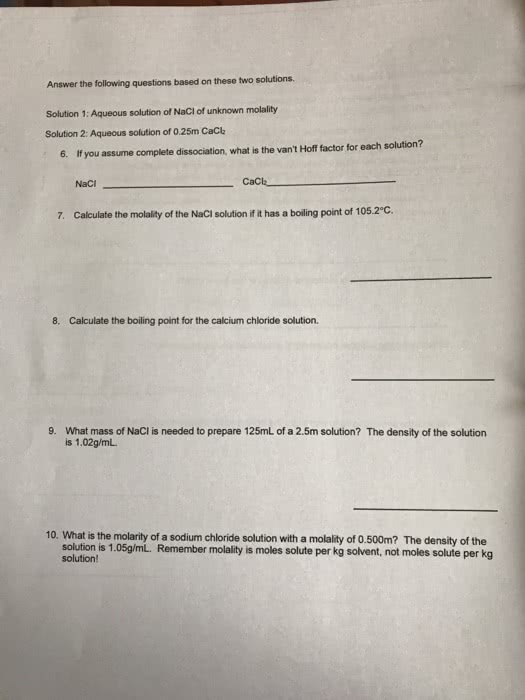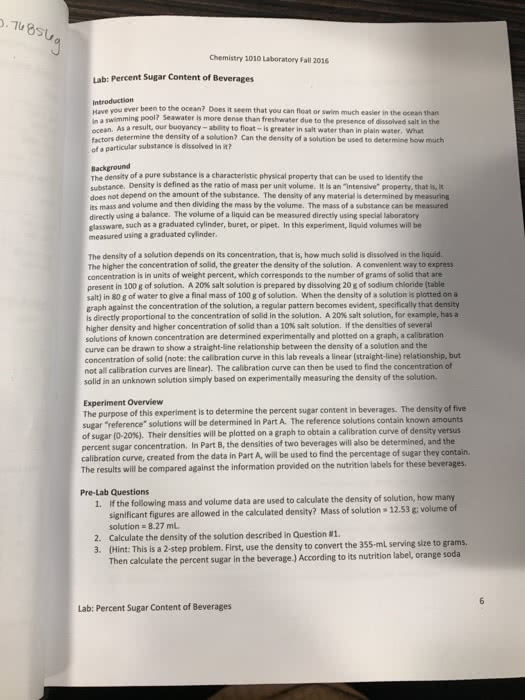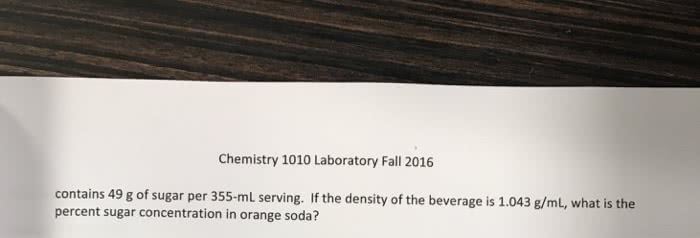CHEM 1040 Chapter Notes - Chapter 4: Molar Concentration
38 views2 pages
16 Dec 2015
School
Department
Course
Professor
Document Summary
The majority of chemical reactions take place in solution because reactions between two solids often proceeds very slowly or not at all. When you run a reaction in a liquid it is convenient by measuring the amount out in volumes. When a substance is dissolved in a liquid, we call this substance the solute and the liquid the solvent. Concentration refers to the quantity of solute in a standard quantity of solution. A solution is dilute when the solute concentration is low and concentrated when the solute concentration is high. Usually these terms are used comparatively and are not specific. For commercially available solutions however, the term concentration refers to the maximum concentration available. Molar concentration or molarity (m): the moles of sulate dissolved in one liter (cubic decimeter) of solution. The advantage of molarity as a concentration unit is that the amount of solute is related to the volume of solution.
Get access
Grade+20% off
$8 USD/m$10 USD/m
Billed $96 USD annually

Homework Help
Study Guides
Textbook Solutions
Class Notes
Textbook Notes
Booster Class
40 Verified Answers
Class+
$8 USD/m
Billed $96 USD annually

Homework Help
Study Guides
Textbook Solutions
Class Notes
Textbook Notes
Booster Class
30 Verified Answers
Related textbook solutions
Chemistry: Structure and Properties
2 Edition,
Tro
ISBN: 9780134293936
Basic Chemistry
5 Edition,
Timberlake
ISBN: 9780134138046
Principles of Chemistry Molecular Approach
4th Edition,
Tro
ISBN: 9780134112831
Principles of Chemistry Molecular Approach
3rd Edition, 2014
Tro
ISBN: 9780321971944
Chemistry: Structure and Properties
2nd Edition,
Tro
ISBN: 9780134293936
Chemistry: A Molecular Approach
3rd Edition,
Tro
ISBN: 9780321809247
Chemistry: A Molecular Approach
5th Edition,
Tro
ISBN: 9780134874371
Principles of Chemistry: A Molecular Approach
4th Edition,
Tro
ISBN: 9780134895741
Chemistry: The Central Science
14th Edition, 2017
Brown
ISBN: 9780134414232
